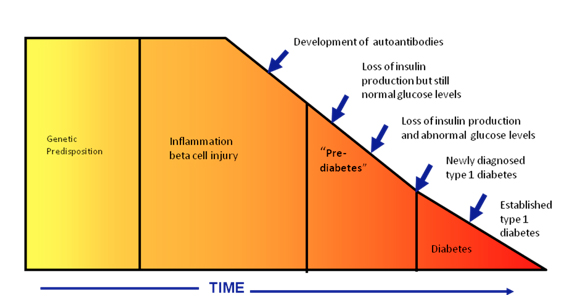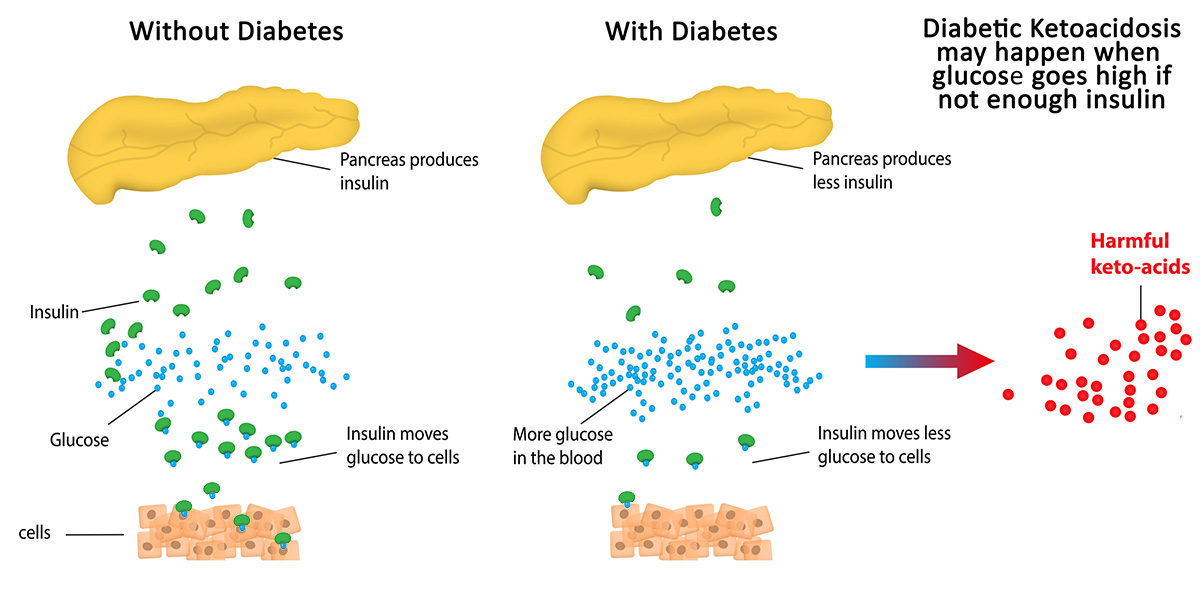Get ready to learn things you never imagined. Not quiet as complicated as this genius kid doing a math equation, but difficult to master in the beginning. We start with basics and build from there. You will get the tools to understand the many variables that impact blood sugars to influence the direction they take. Through proper care and ongoing support, it is very likely to live a health life with diabetes. Yes! Many people with diabetes live without the scary complications that you have probably heard or read about.
So what is diabetes?
As Dr. Adi explains in the drawing below, diabetes develops over time. You can see how this happens in more detail in the following cartoon. Although scientists have not yet discovered exactly what triggers the chain of events that lead to the diagnosis of diabetes, it is known that their tends to be family history involved, also known as genetic predisposition but that link is not always obvious. If you think about who has diabetes in your family, you may or may not have anyone with it.
Next, in the pancreas, the tiny specialized beta cells - the ones that make the life-sustaining hormone insulin - are attacked. For reasons that are not clear, the body begins to attack and destroy these beta cells. This is an autoimmune process where the body thinks its good cells are intruders and thus need to be removed.
The body's defense system over time causes so much beta cell injury that inflammation occurs which can be detected on a blood test, called autoantiboties.
At first, the remaining beta cells are able to make enough insulin. Eventually they cannot and blood sugar (glucose) levels start to go up. As illustrated below, when type 1 diabetes is diagnosed, as well as type 2, some beta cell function remains.
Diabetes is a problem with metabolism, the way the body breaks down food for energy. When we eat, all food breaks down into glucose and the pancreas releases enough insulin to match our food intake. Think of insulin like a key. It opens the millions of cells throughout your body so that the glucose can go inside of the cell. Cells are the smallest component of our bodies and they all need glucose for energy. With diabetes, when the body does not have enough insulin, the blood glucose piles up in the blood stream and is not able to go inside of the cell. As a result, the body does not get the "fuel" (blood glucose) it needs to function. Most will feel very tired. Compare the images below which visualize what happens with type 1 and type 2 diabetes.
When the body does not have enough glucose inside the cell due to a lack of insulin, it will use fat for energy. Sounds great, but the result is a byproduct called ketones. So if the blood sugar is high, the body can turn to fat for energy, and when the fat molecule is split, a ketone gets put into the bloodstream.
The image below illustrates how this process occurs. If these ketones pile up, it can cause a dangerous condition called diabetic ketoacidosis, or DKA, which usually requires hospitalization. This is usually the case when first diagnosed with diabetes and why hospitalization is required. Many people with diabetes go on to live healthy, active lives and avoid DKA. 
We teach you all the ins and outs of what to look for, how to check glucose and ketones, the ideal amount of medications to take, how nutrition helps, the role of physical activity and how to avoid going into the hospital!
It has been said that diabetes means being sweet. Sometimes, when you get tired of having to explain what it means to others, this one of many responses you might use.

